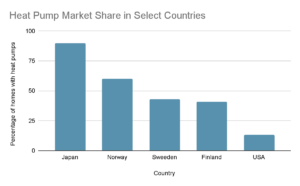The UK has set itself ambitious and legally binding targets to cut greenhouse gas emissions to net zero by 2050, with binding interim milestones.
The UK Transition Plan Taskforce (TPT) is a government-backed initiative to develop the best possible private sector climate transition plans. The TPT offers different approaches than has been the case; no longer will corporations find it easy to boast about net zero objectives and then lose credibility with greenwashing. Associated metrics and governance practices will come into play that will require commitments to be enacted.
Defining a good plan and the practices to enact it are essential components of the TPT. Informing and building on international disclosure standards, the TPT outlines the targets for a good transition plan:
- An entity’s high-level ambitions to mitigate, manage, and respond to the changing climate and to leverage opportunities of the transition to a low greenhouse gas (GHG) and climate resilient economy. This includes GHG reduction targets (e.g., a net zero commitment)
- Short, medium, and long term actions the entity plans to take to achieve its strategic ambition, alongside details on how those steps will be financed
- Governance and accountability mechanisms that support delivery of the plan and robust periodic reporting; and,
- Measures to address material risks to, and leverage opportunities for, the natural environment and stakeholders such as the workforce, supply chains, communities, or customers which arise as part of these actions
The UK government announced last month as part of its Green Finance Strategy that it will consult on requiring Britain’s largest companies to disclose their climate transition plans.
Making the Connection: Natural & Capital
Agriculture, forestry, and land use change currently accounts for 23% of global greenhouse gas (GHG) emissions and is the largest driver of nature loss, which has seen a 69% decrease in global wildlife populations since 1970. Biodiversity loss is one of the greatest risks of the 21st century. The planet is facing its sixth mass extinction, with the current rate of species extinction estimated to be as high as 1000 times the pre-human rate. Key pressures on terrestrial, marine, and other aquatic biodiversity include habitat loss and fragmentation (particularly from agricultural expansion and intensification), over-exploitation of natural resources (such as fish), pollution, invasive alien species, and climate change.
Humans have transformed the majority of the world’s ecosystems, destroying, degrading, and fragmenting terrestrial, marine, and other aquatic habitats, and undermining the services they provide. Ecosystems are moving closer to critical thresholds and tipping points which, if crossed, will result in persistent and irreversible (or very costly to reverse) changes to ecosystem structure, function and service provision, with the potential for profoundly negative environmental, economic, and social consequences.
Where does investment in natural capital relate to the UK’s Transition Plan?
There is a critical opportunity to bring the solutions to climate change and nature loss together in transition planning. It makes both scientific and business sense for companies to take an integrated approach to transition planning. Current demands require resources at least 1.8 times greater than what the earth appears to be able to sustain at this point. Yet current technologies and broad social actions could alter that path and generate positive return on investment (ROI) in a substantial number of cases.
The “natural” component of “natural capital” comprises air, water, soil, and other living organisms. The “capital” is the sum total of the assets and liabilities that a company reports. So think of “natural capital” as a type of planetary balance sheet. Depletion of natural capital includes certain species collapse, biodiversity loss, freshwater consumption, our levels of chemical and plastic pollution, nutrient pollution, and others.
Soil pollution is a type of liability on the natural capital balance sheet. Much of our natural capital, such as biodiversity and ecosystem services, is based on land, so when we deforest, as another example, we deplete soil nutrients, thereby reducing our overall wealth. It can potentially decrease land productivity by 12% and increase food prices by 30% over the next 20, 30 years, according to McKinsey & Company. In fact, an April, 2023 report from McKinsey argues that economic activity fundamentally depends on natural capital, the world’s stock of natural assets.
An urgency exists to protect our natural capital and its ecosystem services, which are worth $140 trillion per year – more than one and a half times the size of global GDP, according to the Organization for Economic Co-operation and Development (OECD).
A 2023 report from WWF/UK proposes that businesses take an approach to integrating nature in existing transition planning frameworks by integrating nature into their climate transition planning to support the delivery of the Paris Agreement and aligning transition plans with nature positive goals of the Kunming-Montreal Global Biodiversity Framework agreed at COP 15, or similar agreements. A robust understanding of the business’s major impacts on nature, mitigating such negative impacts, and aligning business activities with global nature commitments would be necessary. This could take a focus on investing in nature-based climate solutions, such as restoring natural carbon sinks like forests or peatlands and applying safeguards to assess and avoid harm to nature arising from activities under the climate transition plan.
Glasgow Financial Alliance for Net Zero (GFANZ)
The GFANZ working group strives to accelerate capital mobilization in support of net-zero transition through private-sector leadership and public-private collaboration. Five elements of credible transition plan disclosures are set out by GFANZ — with the additional inclusion of nature by WWF/ UK:
Foundations: A company outlines its end-goal with respect to climate and nature, setting out the high-level strategy, the overall objectives, targets, timelines, and the principles governing its actions.
Implementation strategy: A company sets out how it will align its business activities, financing and operations with its climate and nature safeguarding and/or nature-restoration objectives and provide a roadmap for action. It details the strategic levers it will pull to achieve each of its objectives.
Engagement strategy: Engaging stakeholders is key to achieving climate and nature ambitions. An engagement strategy should disclose current and planned engagement activities with the entity’s value chain or portfolio to advance its climate and nature objectives.
Metrics and targets: Metrics and targets outline quantitative goals against which one can measure progress and success of the implementation of the strategy. Nature-related metrics to safeguard and restore should be disclosed explicitly.
Governance: Governance refers to how a company is structured to provide oversight, incentives and broader internal support for the implementation of each of the objectives of the transition plan.
Thousands of valuation studies are available at the local, regional, and global scales, providing estimates of the benefits delivered by biodiversity and ecosystem services, such as pollination, climate regulation, and water purification. The most comprehensive global estimate suggests that ecosystem services provide benefits of $125-140 trillion per year — more than one and a half times the size of global GDP. Conserving, sustainably using, and restoring biodiversity through investment is vital to achieving many other policy objectives, including human health, climate-change mitigation and adaptation, disaster risk reduction, and water and food security.
Final Thoughts about Natural Capital
Nature loss and climate change are deeply interlinked: one cannot be prevented without managing the other. Tackling the biodiversity challenge requires a better understanding of the pressures on the environment and the range of actions and responses that are being put in place to address the pressures. These actions include response measures such as policies, legislation, governance, and finance. Indeed, in a world driven by capital gain, investment may be the crucial driver for mitigating climate pollution and saving what ecological diversity is left on the planet.
Sign up for daily news updates from CleanTechnica on email. Or follow us on Google News!
Have a tip for CleanTechnica, want to advertise, or want to suggest a guest for our CleanTech Talk podcast? Contact us here.
Solar PV & Farming — Trends In Agrivoltaics
I don’t like paywalls. You don’t like paywalls. Who likes paywalls? Here at CleanTechnica, we implemented a limited paywall for a while, but it always felt wrong — and it was always tough to decide what we should put behind there. In theory, your most exclusive and best content goes behind a paywall. But then fewer people read it! We just don’t like paywalls, and so we’ve decided to ditch ours. Unfortunately, the media business is still a tough, cut-throat business with tiny margins. It’s a never-ending Olympic challenge to stay above water or even perhaps — gasp — grow. So …
Advertisement
- SEO Powered Content & PR Distribution. Get Amplified Today.
- PlatoAiStream. Web3 Data Intelligence. Knowledge Amplified. Access Here.
- Minting the Future w Adryenn Ashley. Access Here.
- Buy and Sell Shares in PRE-IPO Companies with PREIPO®. Access Here.
- Source: https://cleantechnica.com/2023/05/09/is-the-uks-climate-transition-plan-compatible-with-natural-capital/
- :has
- :is
- $UP
- 1
- 15%
- 20
- 2023
- 2050
- 30
- 8
- 9
- a
- Able
- About
- above
- accelerate
- According
- accountability
- Accounts
- Achieve
- achieving
- Action
- actions
- activities
- activity
- adaptation
- Additional
- address
- advance
- Advertise
- against
- Agreement
- agreements
- Agricultural
- AIR
- alien
- align
- Alliance
- alongside
- always
- ambition
- ambitions
- ambitious
- an
- and
- announced
- Another
- Applying
- approach
- approaches
- April
- ARE
- Argues
- AS
- Assets
- associated
- At
- available
- avoid
- Balance
- Balance Sheet
- based
- BE
- been
- behind
- being
- benefits
- BEST
- Better
- binding
- Bit
- both
- bring
- broad
- broader
- Building
- business
- businesses
- but
- by
- CAN
- cannot
- capital
- carbon
- case
- cases
- Century
- certain
- chain
- chains
- challenge
- change
- Changes
- changing
- chemical
- chip
- cleantech
- Cleantech Talk
- Climate
- Climate change
- closer
- collaboration
- Collapse
- come
- commitment
- commitments
- Communities
- Companies
- company
- compatible
- component
- components
- comprehensive
- comprises
- connection
- consumption
- content
- Corporations
- could
- Credibility
- credible
- critical
- Crossed
- crucial
- Current
- Currently
- Customers
- Cut
- decide
- decided
- decrease
- delivered
- delivery
- demands
- depends
- details
- develop
- Development
- different
- disaster
- Disclose
- disclosure
- Disclosures
- Diversity
- do
- does
- don
- driven
- driver
- e
- each
- earth
- easy
- Ecological
- Economic
- economy
- ecosystem
- Ecosystems
- elements
- Emissions
- engagement
- engaging
- entity
- Environment
- essential
- estimate
- estimated
- estimates
- Ether (ETH)
- Even
- example
- Exclusive
- existing
- exists
- expansion
- extinction
- facing
- farming
- fewer
- finance
- financial
- financing
- Find
- Fish
- Focus
- food
- For
- fragmentation
- Framework
- frameworks
- from
- function
- fundamentally
- Gain
- GAS
- GDP
- generate
- GHG
- Global
- Goals
- Goes
- good
- governance
- governing
- Government
- greater
- greatest
- greenhouse gas
- Greenhouse gas emissions
- Grow
- Guest
- Half
- harm
- Have
- Health
- help
- here
- High
- high-level
- How
- HTTPS
- human
- if
- Impacts
- implementation
- implemented
- in
- Incentives
- include
- includes
- Including
- inclusion
- Increase
- Initiative
- integrated
- Integrating
- internal
- International
- into
- investing
- investment
- IT
- ITS
- itself
- jpg
- just
- Key
- Land
- largest
- Last
- Leadership
- least
- left
- Legislation
- levels
- Leverage
- liabilities
- liability
- like
- Limited
- living
- local
- Long
- longer
- lose
- loss
- Low
- major
- Majority
- MAKES
- manage
- managing
- many
- margins
- Marine
- Mass
- Mass extinction
- material
- May..
- McKinsey
- measure
- measures
- mechanisms
- Media
- medium
- Metrics
- Milestones
- Mitigate
- mitigating
- mitigation
- mobilization
- Month
- monthly
- more
- most
- moving
- much
- Natural
- Nature
- necessary
- negative
- net
- net-zero
- New
- news
- next
- no
- number
- objectives
- OECD
- of
- Offers
- Olympic
- on
- ONE
- Operations
- opportunities
- Opportunity
- or
- organization
- Other
- Others
- our
- out
- outline
- outlines
- over
- overall
- Oversight
- paris
- Paris Agreement
- part
- particularly
- path
- Patreon
- PayPal
- People
- perhaps
- periodic
- Place
- plan
- planet
- planned
- planning
- plans
- plastic
- plato
- Plato Data Intelligence
- PlatoData
- Play
- please
- podcast
- Point
- points
- policies
- policy
- Pollution
- populations
- portfolio
- positive
- possible
- potential
- potentially
- practices
- Prices
- principles
- private
- private sector
- productivity
- Progress
- proposes
- protect
- provide
- providing
- provision
- Publishing
- put
- quantitative
- range
- Rate
- Read
- reducing
- reduction
- refers
- regional
- Regulation
- report
- Reporting
- Reports
- require
- requires
- resilient
- Resources
- respect
- Respond
- response
- responses
- restore
- restoring
- result
- return
- reverse
- Risk
- risks
- roadmap
- robust
- ROI
- s
- safeguarding
- safeguards
- saving
- scales
- sector
- security
- seen
- sense
- service
- Services
- set
- Sets
- setting
- should
- similar
- since
- sixth
- Size
- So
- Social
- soil
- Solutions
- stakeholders
- standards
- stay
- Steps
- Still
- stock
- Strategic
- Strategy
- strives
- structure
- structured
- studies
- substantial
- success
- such
- suggest
- Suggests
- supply
- Supply chains
- support
- Take
- Talk
- targets
- team
- Technologies
- terrestrial
- than
- that
- The
- their
- then
- There.
- thereby
- These
- they
- think
- this
- those
- Through
- timelines
- times
- tip
- Tipping
- to
- together
- Total
- transformed
- transition
- Trends
- Trillion
- type
- Uk
- UK government
- under
- understanding
- Updates
- urgency
- us
- use
- using
- Valuation
- value
- Ve
- very
- via
- vital
- want
- was
- Water
- we
- Wealth
- What
- when
- which
- while
- WHO
- Wildlife
- will
- with
- without
- Workforce
- working
- world
- world’s
- worth
- would
- Wrong
- year
- years
- yet
- you
- Your
- zephyrnet
- zero







